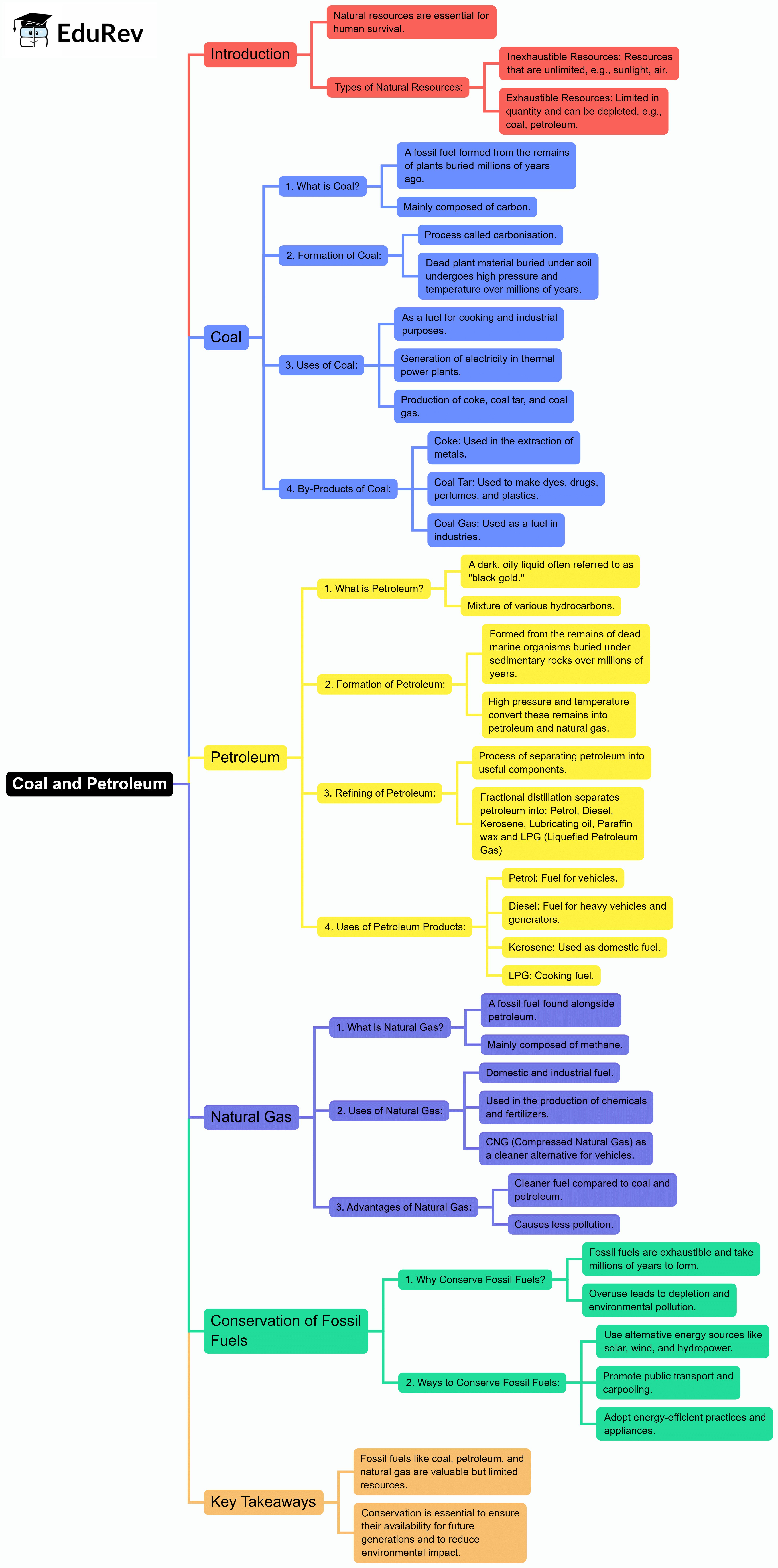Class 8 Exam > Class 8 Notes > Science Class 8 > Mind Map: Coal and Petroleum
Mind Map: Coal and Petroleum | Science Class 8 PDF Download

The document Mind Map: Coal and Petroleum | Science Class 8 is a part of the Class 8 Course Science Class 8.
All you need of Class 8 at this link: Class 8
|
92 videos|296 docs|44 tests
|
FAQs on Mind Map: Coal and Petroleum - Science Class 8
| 1. What are the primary differences between coal and petroleum in terms of composition and uses? |  |
Ans. Coal is primarily composed of carbon along with various other elements such as hydrogen, sulfur, oxygen, and nitrogen. It is typically used as a solid fuel for electricity generation and in industrial processes. Petroleum, on the other hand, is a liquid mixture of hydrocarbons and is refined into various products like gasoline, diesel, and lubricants. While coal is mainly used for energy production, petroleum serves as a key resource for transportation fuels and chemical feedstocks.
| 2. How is coal formed, and what are the stages of its formation? |  |
Ans. Coal formation occurs over millions of years through a process known as coalification. It begins with the accumulation of plant material in swampy areas, which is then buried under layers of sediment. Over time, heat and pressure transform the plant material into peat, which eventually becomes lignite, then sub-bituminous coal, and finally anthracite as the carbon content increases and impurities are removed. This process can take several geological eras.
| 3. What are the environmental impacts of coal and petroleum extraction and use? |  |
Ans. The extraction and use of coal can lead to significant environmental impacts, including air pollution from the combustion of coal, which releases sulfur dioxide (SO₂) and particulate matter, contributing to respiratory issues and acid rain. Additionally, coal mining can result in habitat destruction and water pollution. Petroleum extraction can also harm the environment, leading to oil spills, greenhouse gas emissions, and contamination of soil and water resources. Both energy sources contribute to climate change due to their carbon emissions.
| 4. What are the advantages and disadvantages of using coal and petroleum as energy sources? |  |
Ans. Coal is abundant and relatively inexpensive, making it a widely used energy source. However, it has high carbon emissions and environmental degradation associated with mining and burning. Petroleum is versatile, powering vehicles and industries, but it is finite, subject to volatile prices, and contributes to greenhouse gas emissions. Both sources require careful management to mitigate their environmental impacts while meeting energy demands.
| 5. How can the use of coal and petroleum be reduced to promote sustainability? |  |
Ans. To promote sustainability, the use of coal and petroleum can be reduced by investing in renewable energy sources such as solar, wind, and hydroelectric power, which have lower environmental impacts. Implementing energy efficiency measures, developing electric vehicles, and promoting public transportation can also decrease reliance on fossil fuels. Furthermore, transitioning to cleaner technologies and carbon capture methods can help mitigate the effects of existing coal and petroleum use while reducing overall carbon footprints.
Related Searches





















